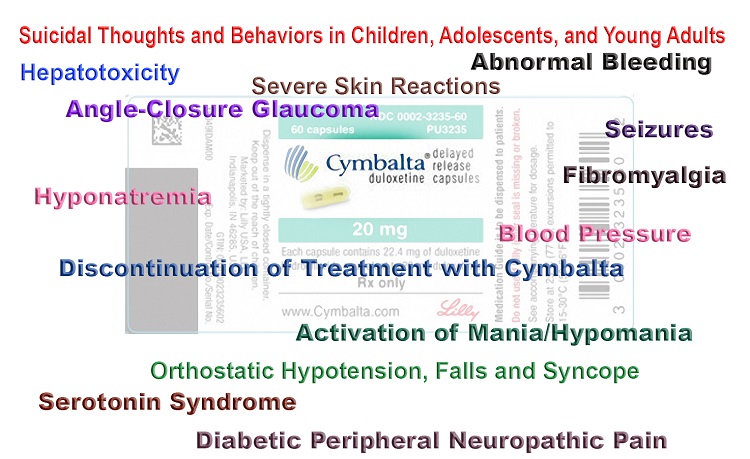Many Americans with chronic pain conditions may not realize that their access to narcotic pain medication, which is already difficult and mired with barriers, may be about to decrease even more. An FDA advisory board is currently considering a petition to change the labeling on opioid pain relievers, which could affect the ability of millions of Americans with chronic pain conditions to continue using these drugs as they are being used today. The petition to the FDA, led by Physicians for Responsible Opioid Prescribing (PROP), calls for three changes to the drug labels of opioid pain medications. For non-cancer pain, these medications are currently approved for “moderate to severe” pain, and the proposed changes would remove the word “moderate,” leaving the drugs indicated only for non-cancer pain that is severe. In addition, the petition calls for the addition of a daily limit of 100 mg of morphine or equivalent per day, and a maximum 90 day treatment period.
What the Medical Societies Think
Several respected medical bodies, such as the American Medical Association (AMA), are against the PROP petition to the FDA. In a letter to the FDA opposing the petition, the AMA correctly points out that the PROP petition is not based on valid, scientific data from new studies, nor does it suggest proven therapies that can replace opioids in patient treatment when necessary. The American Academy of Pain Medicine stated in a letter to the FDA that the “rationale for the requested changes is seriously flawed, potentially harmful to patients with debilitating pain conditions for whom opioid therapy is indicated, and without substantive scientific foundation.”
Preventing Abuse
The proposed labeling changes are aimed at curbing a prescription painkiller abuse problem that has been increasing exponentially in the U.S. The issue of narcotic painkiller abuse/misuse has been in the news recently, with the Centers for Disease Control and Prevention (CDC) reporting in July that the number of women dying from prescription painkiller overdoses has increased by more than 400 percent since 1999. Although more men than women still die of prescription painkiller overdoses, the increase in women has been dramatic and highlights the growing problem with prescription painkiller abuse. Almost 48,000 women died from prescription painkiller overdose between 1999 and 2010, and 30 times that number went to the ER for issues related to painkiller abuse or misuse. Prescription painkillers now top heroin and cocaine as the number one cause of death from drug overdose, although many of these deaths involve additional drugs or alcohol.
The proposed changes to opioid painkiller labeling aims to address the problem of prescription painkiller abuse by limiting the number of prescriptions for these drugs. However, it is not clear that limiting prescriptions for these drugs would solve the problem of drug addiction, which is much more complex than just being about availability of prescriptions. For instance, research shows that 75 percent of people who abuse prescription painkillers have obtained drugs from family members, friends, or on the street, rather than having these painkillers prescribed to them. In addition, the risk of chronic pain patients developing addiction is relatively low, and addiction in this patient population is more common if other predisposing factors are also present (such as prior history of substance abuse, or mental health disorders). Prescription painkiller abuse is a problem that deserves to be addressed, but there is little evidence to suggest that the proposed opioid labeling changes will help this problem.
The Burden of Chronic Pain
On the other hand, the proposed changes will undoubtedly hurt the population of over 100 million Americans suffering from chronic pain. Chronic pain can result from many conditions, including headaches/migraines, low back pain, arthritis, cancer pain, fibromyalgia, pelvic pain, and neurogenic pain (pain resulting from damage to the peripheral nerves or central nervous system), and is generally defined as pain lasting longer than three to six months. Many chronic pain conditions are more likely to affect women than men. The burden of chronic pain, in terms of costs to the health care system, is huge: chronic pain costs up to 635 billion dollars per year in medical bills and lost productivity. However, the personal cost to the patient with chronic pain is immeasurable.
According to the World Health Organization (WHO), millions of people around the world suffer from under-treated pain. Patients with inadequately treated pain have an increased risk of suffering from depression and anxiety, and may experience many consequences of the pain such as decreased mobility, impaired sleep, immune impairment, loss of independence, and withdrawal from social interaction. Other than increasing the amount of suffering an individual has to endure, under-treatment of pain has other effects such as lost productivity and excessive health care costs. Patients with chronic, non-malignant pain are at the highest risk of having their pain inadequately managed. And it is those patients who would be most affected by the proposed changes to opioid labeling. Patients in both developed and developing countries have under-treated pain for multiple reasons including inaccessibility of opioids.
Women with Chronic Pain
Women may be particularly at risk for having their pain under-treated, even though women are more at risk for suffering with a chronic pain condition. Most medications, especially older medications (which includes narcotic painkillers), were only tested on male animals and human males. Therefore, how well they actually treat pain in women, and their possible adverse effects, are not well understood. Furthermore, the fact that the mechanisms behind these chronic pain conditions are not understood also makes them difficult to treat effectively.
Chronic Pain is Complicated
Chronic pain is a complicated problem that requires highly individualized multi-modal treatment. In addition to using appropriate medications at the right dosages, other methods to address pain can be helpful, such as surgery, physical therapy, psychological counseling, acupuncture, and meditation. There are only about 3000 to 4000 pain specialists across the U.S., leaving primary care doctors to treat pain, despite very little specific training. In addition, lack of reimbursement by insurance companies for complementary therapies can be an additional barrier to patients being able to fully treat their pain. Making opioid pain medications less accessible for chronic pain patients will only increase the number of barriers for these patients.
Will PROP Work?
The PROP petition aims to fix the prescription drug abuse problem by withholding medication from patients with chronic pain. The idea that having fewer drugs in circulation will solve the problem of prescription painkiller addiction is too simplistic, as drug addiction is a much more complex psychosocial problem. But worse, this petition will compound the already huge problem of chronic pain in the U.S., by limiting accessibility to a class of medications that many pain patients find helpful for their condition. I believe the FDA should reject the PROP petition in favor of other approaches that target the drug abuse problem directly, rather than causing a large group of patients to endure more suffering for the sake of unproven societal benefit.
To help stop the PROP petition to the FDA, sign the change.org petition at: http://www.change.org/petitions/please-help-to-stop-prop-s-petition.














